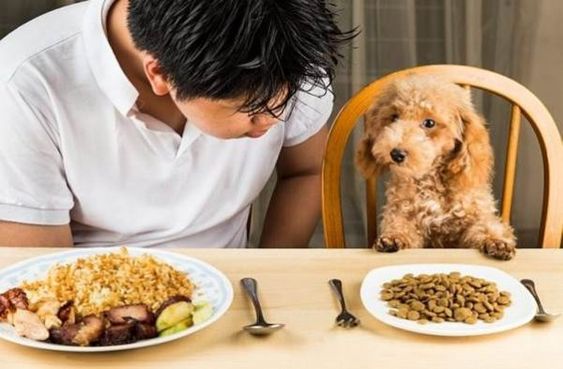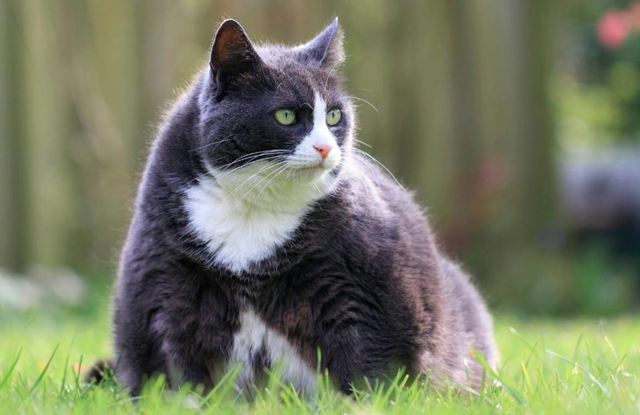As pet owners, we are responsible for ensuring our furry friends are happy, healthy, and comfortable. One of the key aspects of maintaining their health is to keep them at an appropriate weight. Obesity in pets can lead to several health complications, including joint problems, heart disease, and diabetes, among others. Therefore, it is crucial to ensure that your dogs and cats maintain a healthy weight. In this article, we will discuss safe and effective ways to help your pets lose weight.

Understanding Obesity in Dogs and Cats
Obesity in pets is a growing problem in the United States. According to the Association for Pet Obesity Prevention (APOP), over 56% of dogs and 60% of cats in the US are overweight or obese. This is an alarming statistic that requires immediate attention.

Obesity in pets can develop due to various reasons, such as overfeeding, lack of exercise, genetics, and underlying medical conditions. It is essential to understand the root cause of your pet’s obesity before devising a weight loss plan.
How to Safely and Effectively Help Your Pet Lose Weight
Helping your pet lose weight is not rocket science. However, it requires patience, consistency, and dedication. Here are some safe and effective ways to help your dogs and cats lose weight:
Consult with Your Veterinarian

Before starting any weight loss program, consult with your veterinarian. They will assess your pet’s overall health, diagnose any underlying medical conditions, and suggest an appropriate diet and exercise plan for your pet’s specific needs.
Change Your Pet’s Diet

One of the primary reasons for obesity in pets is overfeeding or consuming high-calorie foods. Switching to a low-calorie, high-fiber diet will help your pet lose weight while keeping them satiated. Choose a diet that is balanced, nutritious, and contains all the essential vitamins and minerals.
Provide Regular Exercise
Regular exercise is crucial for your pet’s weight loss journey. Make sure to provide regular exercise sessions, such as walks, jogs, playtime, or any activity that keeps them active and engaged. Aim for at least 30 minutes of exercise every day.
Monitor Caloric Intake
It is essential to monitor your pet’s daily caloric intake. Feeding them smaller portions throughout the day rather than one large meal will help them feel satisfied while keeping their calorie intake in check. Avoid giving them table scraps or treats that are high in fat and calories.
Examples of Safe and Effective Weight Loss Methods for Dogs and Cats
There are several safe and effective weight loss methods for dogs and cats. Here are some examples:
Portion Control
Portion control is one of the most effective ways to help your pet lose weight. Measure out the recommended portion size according to their weight, age, and activity level. Feed them smaller meals throughout the day rather than one large meal.
Low-Calorie Diets
Low-calorie diets are an excellent way to help your pet lose weight while meeting their nutritional needs. Choose a diet that is low in calories and high in fiber. Consult with your veterinarian before switching to a new diet.
Increased Exercise

Regular exercise is critical for your pet’s weight loss journey. Increase their daily exercise by taking them on walks, playing fetch, or engaging in any activity that keeps them moving.
Comparing Different Weight Loss Methods
There are several weight loss methods available for pets, but not all of them are safe or effective. Some methods, such as crash diets or extreme exercise regimens, can harm your pet’s health. It is essential to compare different weight loss methods carefully.
The best weight loss method for your pet depends on their specific needs, overall health, and lifestyle. Consult with your veterinarian to determine the best weight loss plan for your pet.
Advice on How to Help Your Pet Lose Weight Safely and Effectively
Helping your pet lose weight safely and effectively requires patience, consistency, and dedication. Here are some tips:
Monitor Their Progress
Regularly monitor your pet’s weight loss progress. Weigh them weekly and keep track of their measurements. This will help you determine if their weight loss plan is working and make any necessary changes.
Stay Consistent
Consistency is key when it comes to helping your pet lose weight. Stick to the recommended diet and exercise plan and avoid cheating or giving in to temptation.
Celebrate Small Victories
Celebrate small victories along the way. A successful weight loss journey takes time and effort, so make sure to celebrate every milestone with your pet.
Conclusion
Obesity in pets is a growing problem that requires immediate attention. Helping your pets lose weight safely and effectively requires patience, consistency, and dedication. Consult with your veterinarian, change their diet, provide regular exercise, and monitor their progress to help them achieve their weight loss goals.
Remember, a healthy pet is a happy pet!